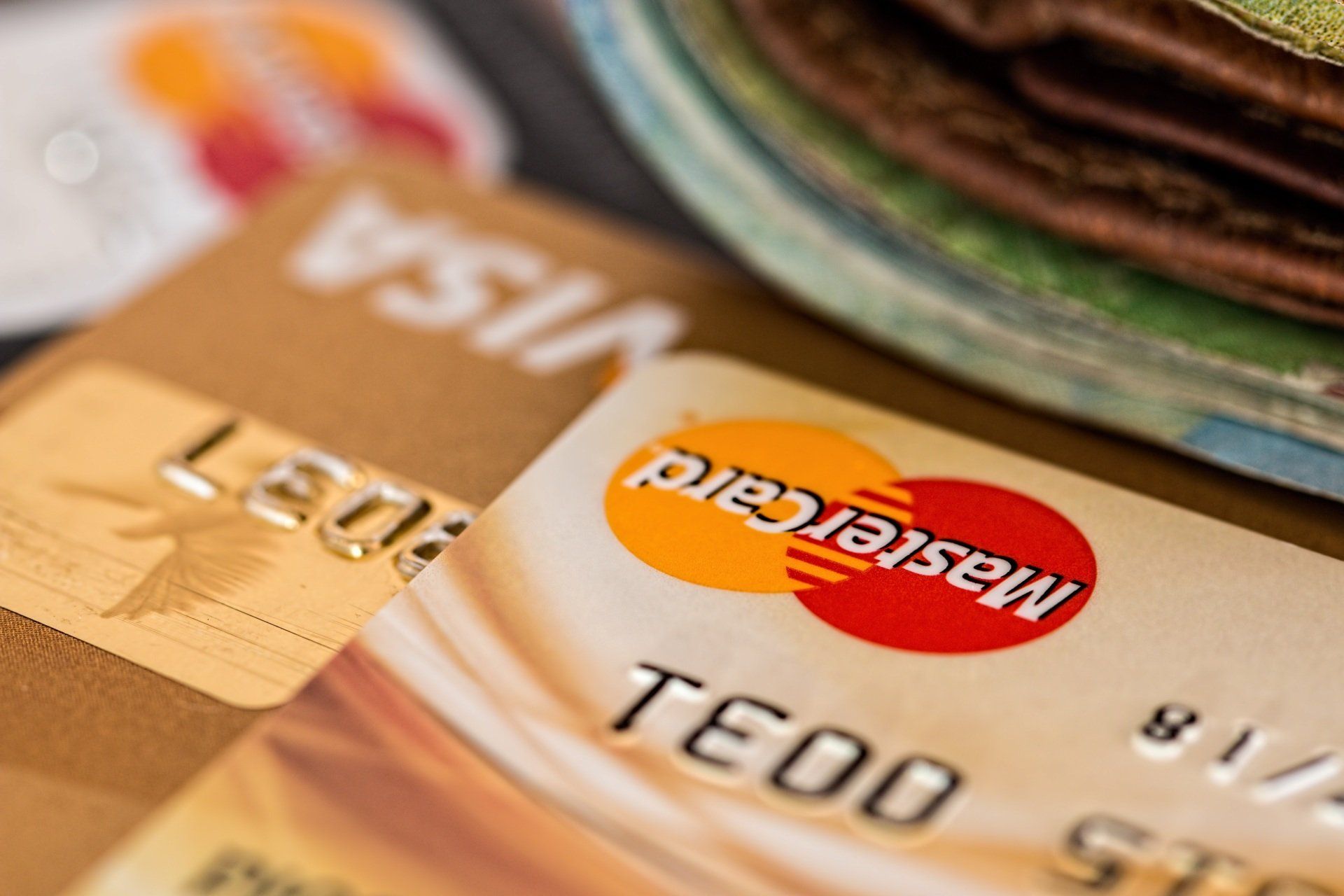Build Your Credit
How To Build Your Personal Credit
If your credit score is lower than you'd like, there may be fast ways to bring it up. Depending on what's holding it down, you may be able to tack on as many as 100 points relatively quickly.
Scores in the "fair" and "bad" areas of the credit score ranges could see dramatic results.
Is 100 points realistic?
If you’re struggling with a low score, you’re better positioned to make gains quickly than someone with a strong credit history.
Is a 100-point increase realistic? Rod Griffin, senior director of public education and advocacy for credit bureau Experian, says yes. “The lower a person’s score, the more likely they are to achieve a 100-point increase,” he says. “That’s simply because there is much more upside, and small changes can result in greater score increases.”
On average, Americans carry $6,194 in credit card debt, according to the 2019 Experian Consumer Credit Review. And Alaskans have the highest credit card balance, on average $8,026.
Here are some strategies to quickly improve your credit:
1. Pay credit card balances strategically
2. Ask for higher credit limits
5. Dispute credit report errors
6. Deal with collections accounts
8. Get credit for rent and utility payments
1. Pay credit card balances strategically
The portion of your credit limits you're using at any given time is called your credit utilization. A good guideline: Use less than 30% of your limit on any card, and lower is better. The highest scorers use less than 7%. (You can track your credit utilization on each card and overall by viewing your credit score profile with NerdWallet.)
You want to make sure your balance is low when the card issuer reports it to the credit bureaus, because that's what is used in calculating your score. A simple way to do that is to pay down the balance before the billing cycle ends or to pay several times throughout the month to always keep your balance low.
Impact: Highly influential. Your credit utilization is the second-biggest factor in your credit score; the biggest factor is paying on time.
Time commitment: Low to medium. Set calendar reminders to log in and make payments. You may also be able to add alerts on your credit card accounts to let you know when your balance hits a set amount.
How fast it could work: Fast. As soon as your credit card reports a lower balance to the credit bureaus, that lower utilization will be used in calculating your score.
Back to top
2. Ask for higher credit limits
When your credit limit goes up and your balance stays the same, it instantly lowers your overall credit utilization, which can improve your credit. If your income has gone up or you've added more years of positive credit experience, you have a decent shot at getting a higher limit.
Impact: Highly influential, because utilization is a large factor in credit scores.
Time commitment: Low. Contact your credit card issuer to ask about getting a higher limit. See if it's possible to avoid a “hard” credit inquiry, which can temporarily drop your score a few points.
How fast it could work: Fast. Once the higher limit is reported to credit bureaus, it will lower your overall credit utilization — as long as you don't use up the extra "room" on the card.
3. Become an authorized user
If a relative or friend has a credit card account with a high credit limit and a good history of on-time payments, ask to be added as an authorized user. That adds the account to your credit reports, so its credit limit can help your utilization. You also benefit from their positive payment history. The account holder doesn’t have to let you use the card — or even give you the account number — for your credit to improve.
Make sure the account reports to all three major credit bureaus (Equifax, Experian and TransUnion) to get the best effect; most credit cards do.
Impact: Potentially high, especially if you are a credit newbie with a thin credit file. The impact will be smaller for those with established credit who are trying to offset missteps or lower credit utilization.
Time commitment: Low to medium. You'll need to have a conversation with the accountholder you're asking for this favor, and agree on whether you will have access to the card and account or simply be listed as an authorized user.
How fast it could work: Fast. As soon as you're added and that credit account reports to the bureaus, the account can benefit your profile.
4. Pay bills on time
No strategy to improve your credit will be effective if you pay late. Worse, late payments can stay on your credit reports for 7½ years.
If you miss a payment by 30 days or more, call the creditor immediately. Pay up as soon as you can and ask if the creditor will consider no longer reporting the missed payment to the credit bureaus. Even if the creditor won’t do that, it’s worth getting current on the account ASAP. Every month an account is marked delinquent hurts your score.
Impact: Highly influential. Your record of paying bills on time is the largest scoring factor in both FICO and VantageScore credit scoring systems.
Time commitment: Low. Prevent missed payments by setting up account reminders and considering automatic payments to cover at least the minimum.
How fast it could work: This varies, depending on how many payments you've missed and how recently. It also matters how late a payment was (30, 60, 90 or more days past due). Fortunately, the impact of delinquent payments fades over time, and adding more positive credit accounts can help to speed that up.
5. Dispute credit report errors
A mistake on one of your credit reports could be pulling down your score. Disputing credit report errors can help you quickly improve your credit.
You're entitled to free reports from each of the three major credit bureaus. Use AnnualCreditReport.com to request them and then check for mistakes, such as payments marked late when you paid on time, someone else's credit activity mixed with yours, or negative information that’s too old to be listed anymore.
Once you've identified them, dispute those errors.
Impact: Varies, but could be high if a creditor is reporting that you missed a payment when you didn't.
Time commitment: Medium to high. It takes some time to request and read your free credit reports, file disputes about errors and track the follow-up. But the process is worthwhile, especially if you're trying to build your credit ahead of a milestone such as applying for a large loan. If you're planning to apply for a mortgage, get disputes done with plenty of time to spare.
How fast it could work: Varies. The credit bureaus have 30 days to investigate and respond. Some companies offer to dispute errors and quickly improve your credit, but proceed with caution.
Back to top
6. Deal with collections accounts
Paying off a collections account removes the threat that you will be sued over the debt, and you may be able to persuade the collection agency to stop reporting the debt once you pay it. You can also remove collections accounts from your credit reports if they aren't accurate or are too old to be listed.
Impact: Varies. An account in collections is a serious negative mark on your credit report, so if the collector agrees to stop reporting the account it could help a great deal.
If the collector keeps reporting the account, the effect depends on the scoring model used to create your score. The FICO 8 model, which is most widely used for credit decisions, still takes paid collections into account. However, more recent FICO models and VantageScores ignore paid-off collections.
Time commitment: Medium. You'll need to request and read your credit reports, then make a plan to handle collections accounts that are listed.
How fast it could work: Moderately quickly. On credit scores that ignore paid collections, such as VantageScore and newer FICOs, as soon as the paid-off status is reported to credit bureaus it can benefit your scores. In other cases, such as disputing a collection account or asking for a goodwill deletion, the process could take a few months.
7. Use a secured credit card
Another way to build or rebuild your credit is with a secured credit card. This type of card is backed by a cash deposit; you pay it upfront and the deposit amount is usually the same as your credit limit. You use it like a normal credit card, and your on-time payments help build your credit.
Impact: Varies. This is likeliest to help someone new to credit with accounts or someone with dented credit wanting a way to add more positive credit history and dilute past missteps.
Time commitment: Medium. Look for a secured card that reports your credit activity to all three major credit bureaus. You may also consider looking into alternative credit cards that don't require a security deposit.
How fast it could work: Several months. The goal here is not just having another card, although that can help your score a bit by improving your depth of credit. Rather, your aim is to build a record of keeping balances low and paying on time.
Back to top
8. Get credit for rent and utility payments
Rent reporting services can add your on-time rent payments to your credit reports. Rent payments are not considered by every scoring model — VantageScores include them but FICO 8 does not, for example. Even so, if a would-be creditor looks at your reports, rent records will be there, and a long record of consistent payments can only help.
Experian Boost also can help, but in a more limited way. You link bank accounts to the free Boost service, which then scans for payments to streaming services and phone and utility bills. You choose which payments you want added to your Experian credit report. If a creditor pulls your FICO 8 using Experian data, you get the benefit of that additional payment history.
Impact: Varies.
Time commitment: Low. After initial setup, no additional time is needed.
How fast it could work: Boost works instantly; rent reporting varies, with some services offering an instant "lookback" of the past two years of payments. Without that, it could take some months to build a record of on-time payments.
9. Add to your credit mix
An additional credit account in good standing may help your credit, particularly if it is a type of credit you don't already have.
If you have only credit cards, consider getting a loan; a credit-builder loan can be a low-cost option. Check that the loan you're considering adding reports to all three credit bureaus.
If you have only loans or have few credit cards, a new credit card may help. In addition to improving credit mix, it can reduce your overall credit utilization by providing more available credit.
Impact: Varies. Opening a loan account is likeliest to help someone with only credit cards and vice versa. And there's more potential gain for people with few accounts or short credit histories.
Time commitment: Medium. Consider whether the time spent researching providers and applying is worth the potential lift to your score. Weigh what you'd pay in interest and fees, too, if you're getting a loan or card strictly to improve your credit.
How fast it could work: Fast. As soon as the new account's activity is reported to the credit bureaus, it can start to benefit you.
Don't Know Your Score?
Check out Credit Karma and their free credit reports here! You can also sign up for credit monitoring while you are at it and keep track of what is going on with your credit monthly.
Your credit score and underlying history are some of the most vital parts of your financial life. Your credit score follows you forever and it will play a huge role in many major financial situations throughout your life. Many people think that a credit score only really matters when it comes to being approved for a loan or credit card, but it goes far beyond that.
Original strategy post by: https://www.nerdwallet.com/article/finance/raise-credit-score-fast
















